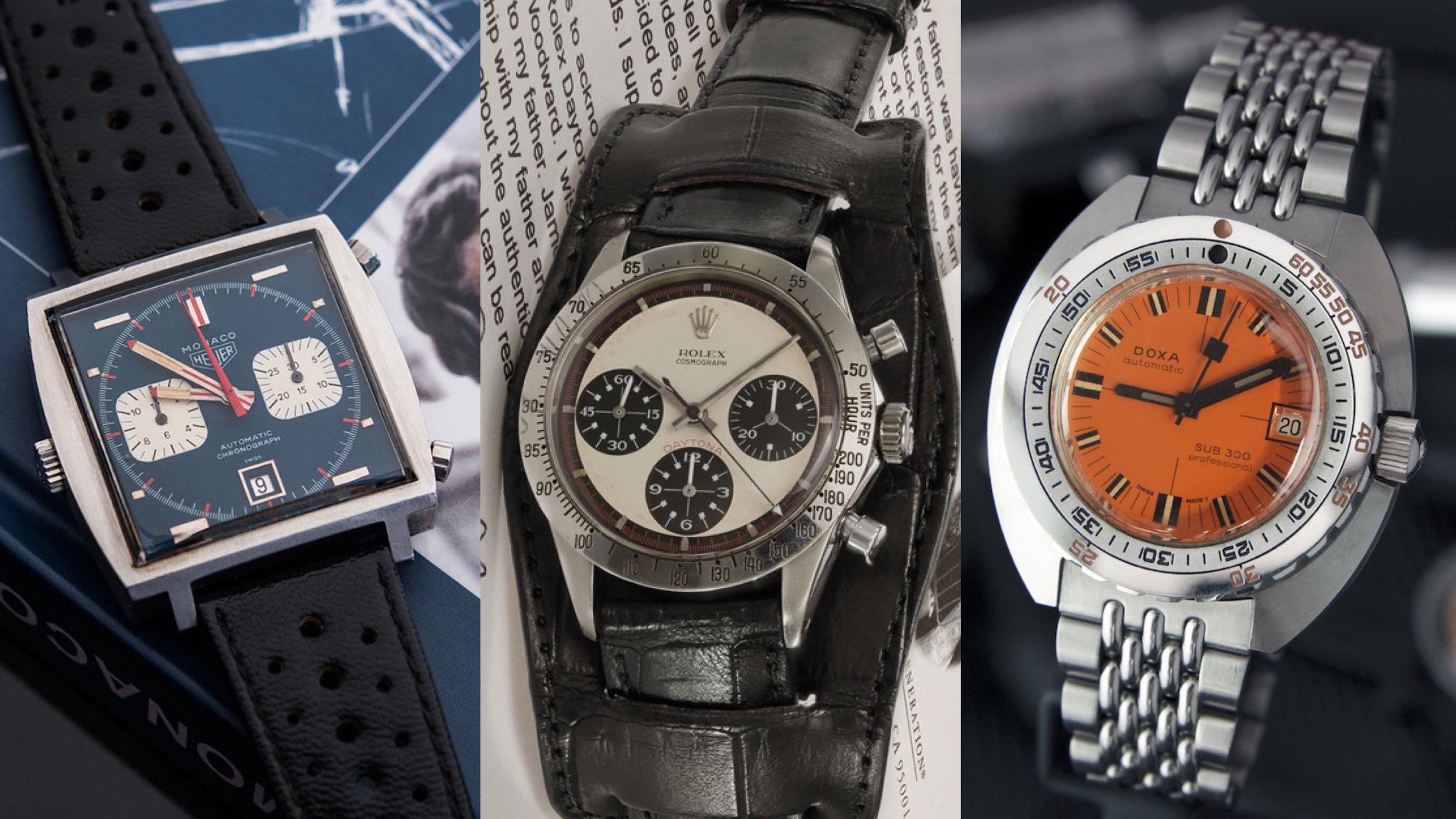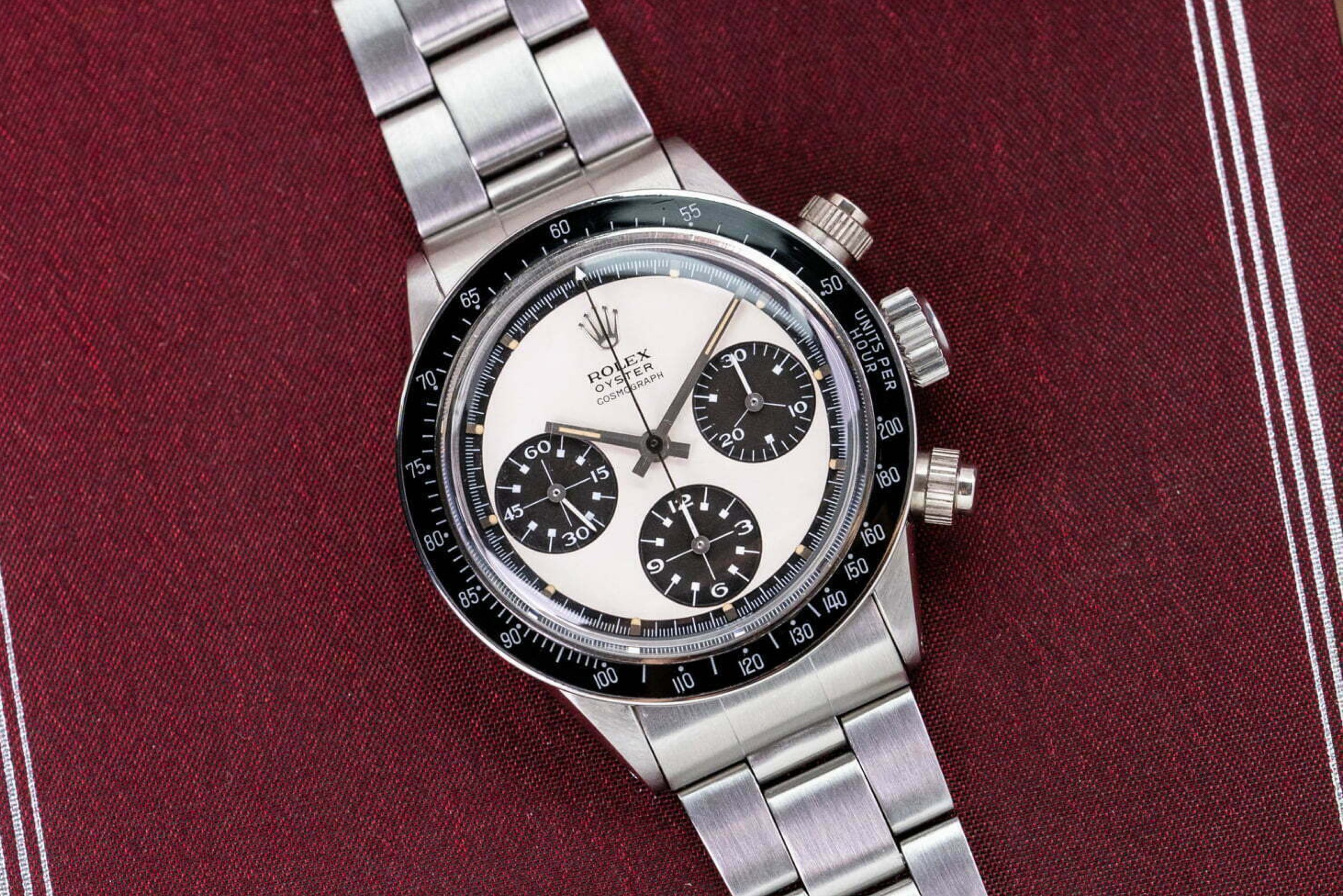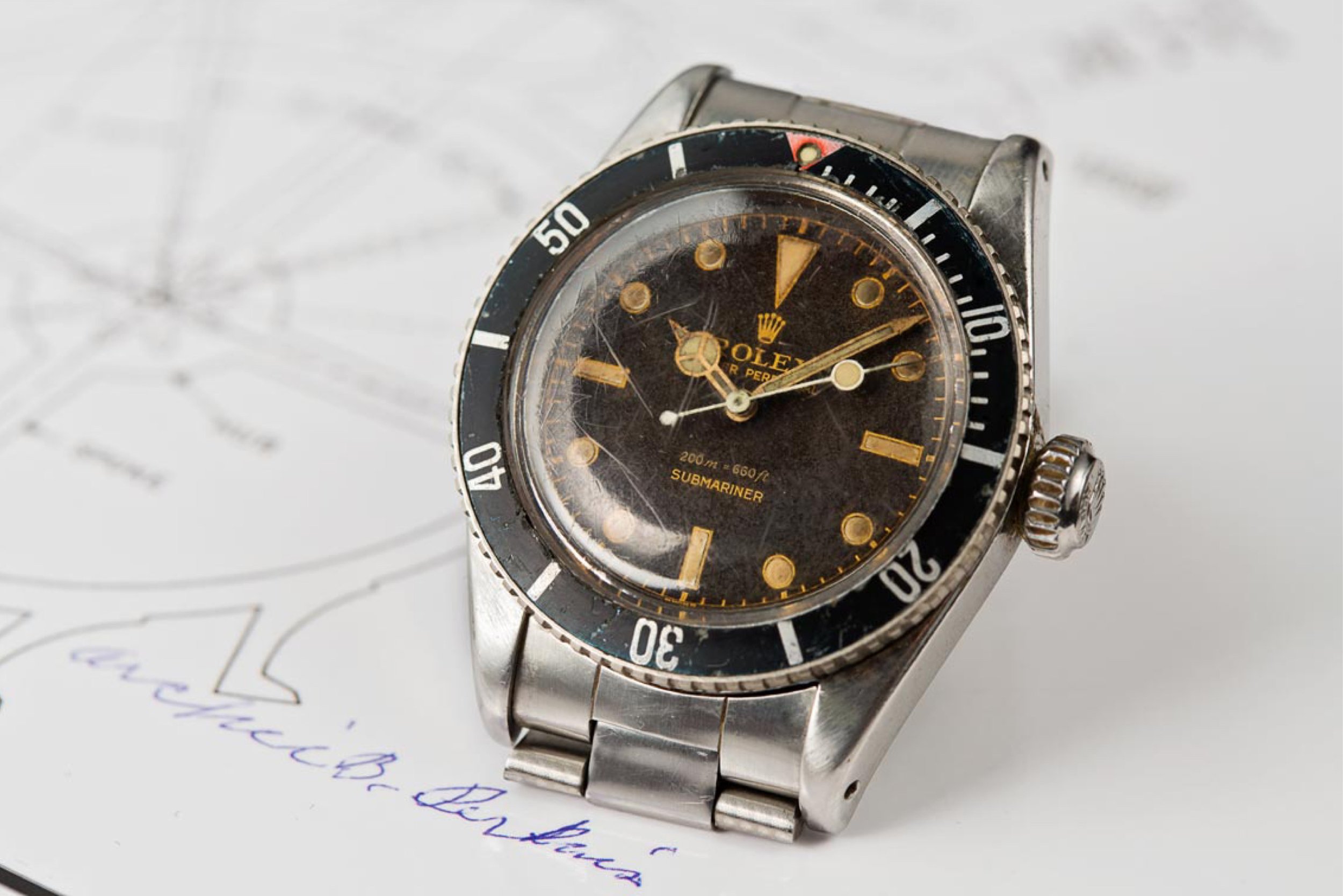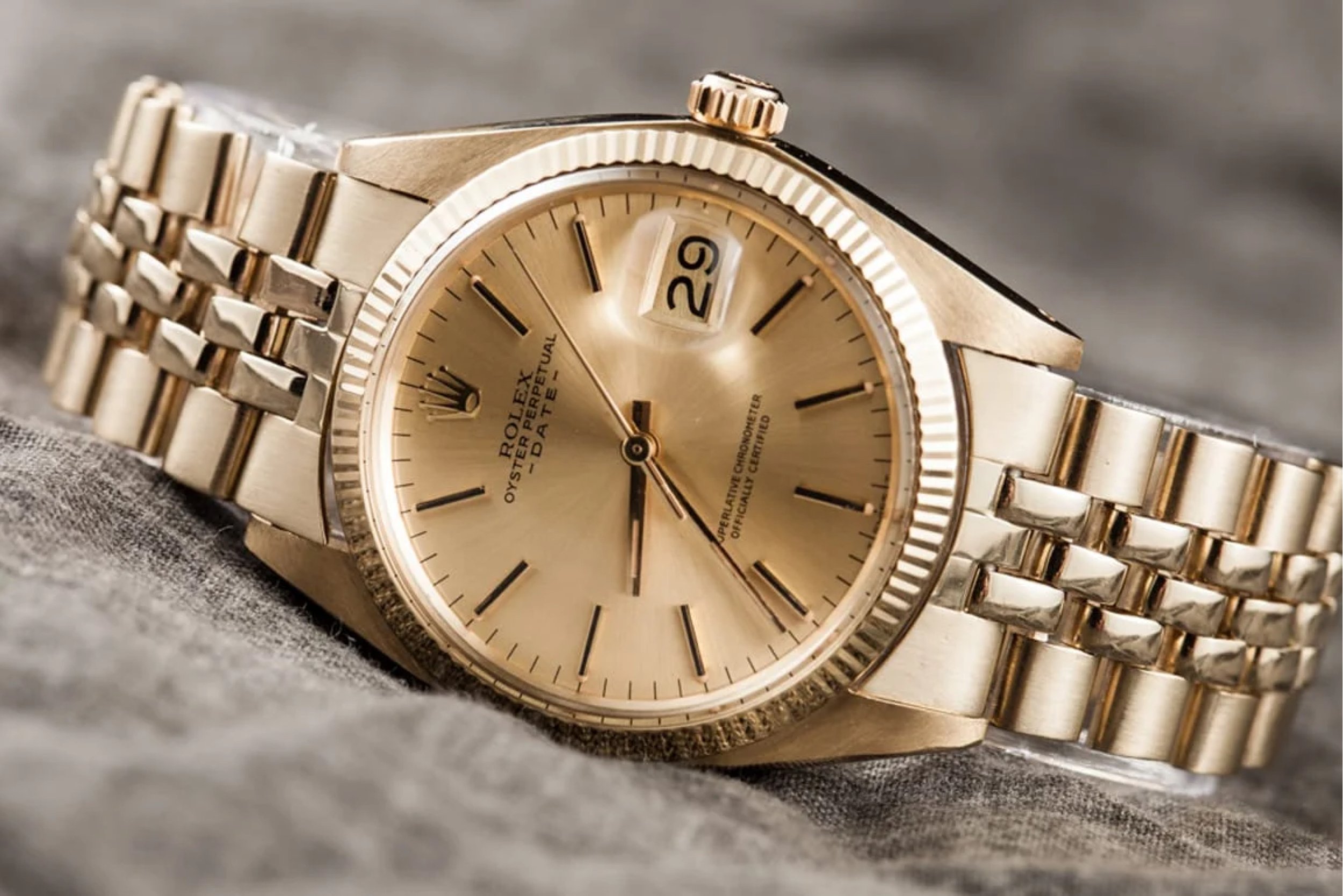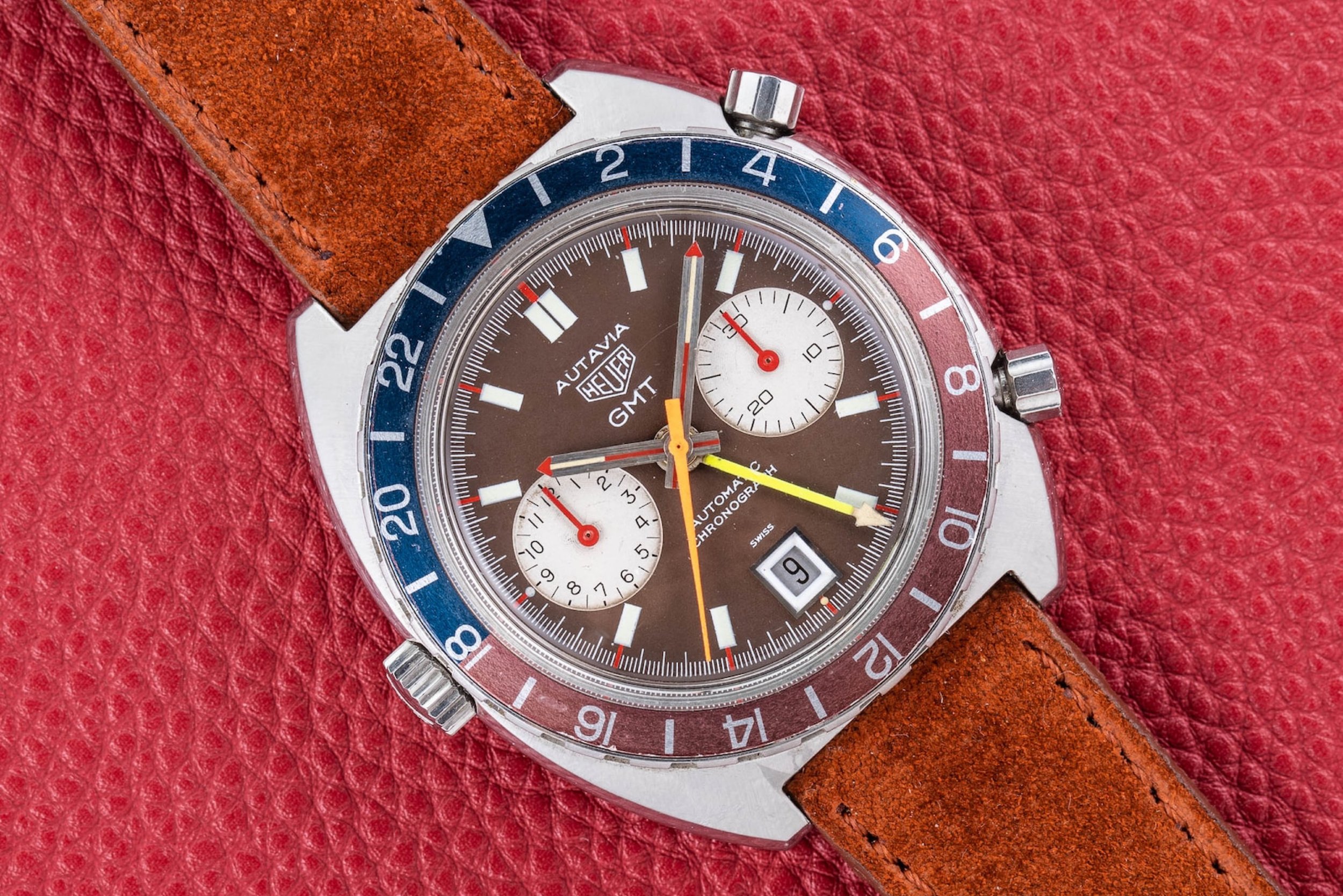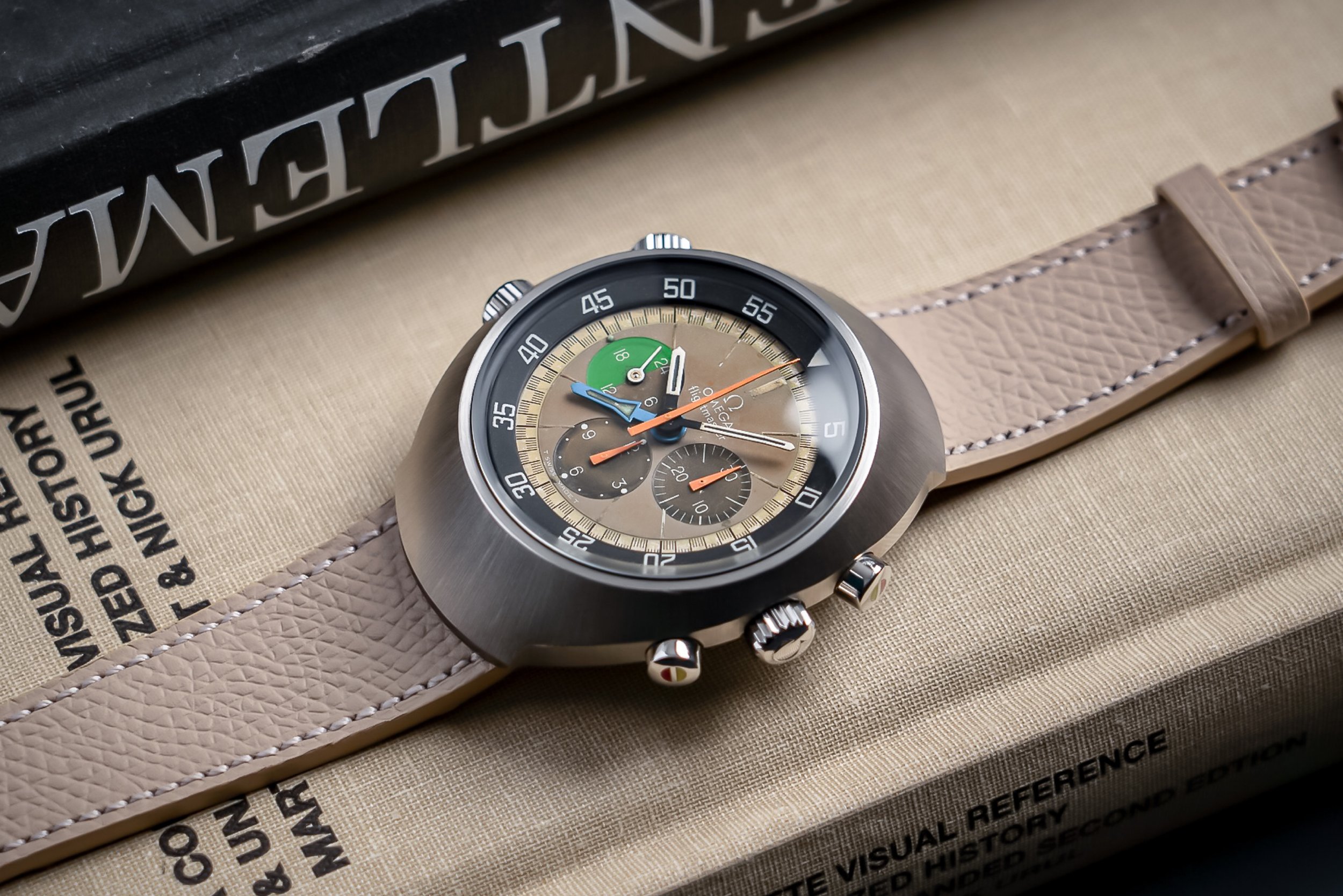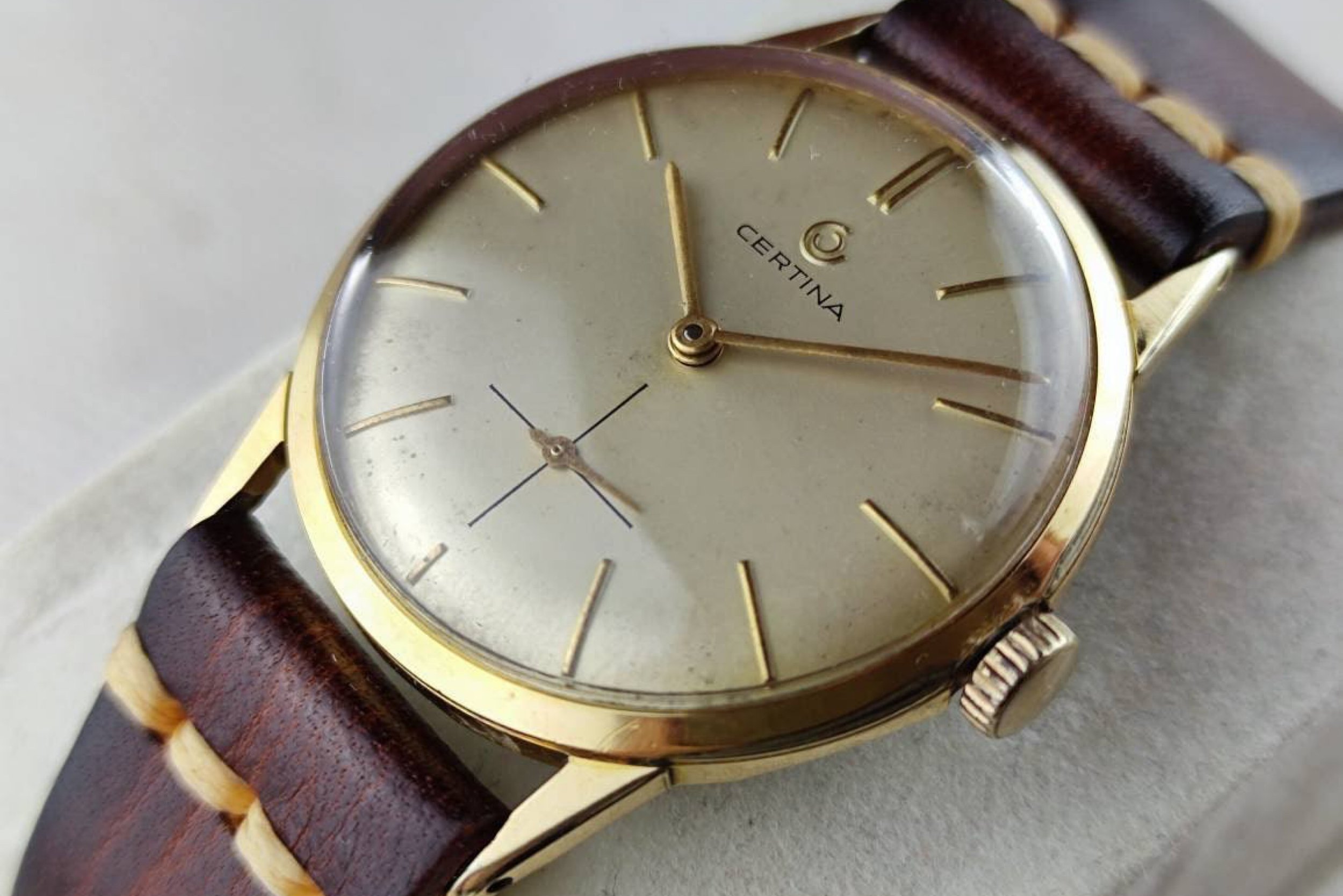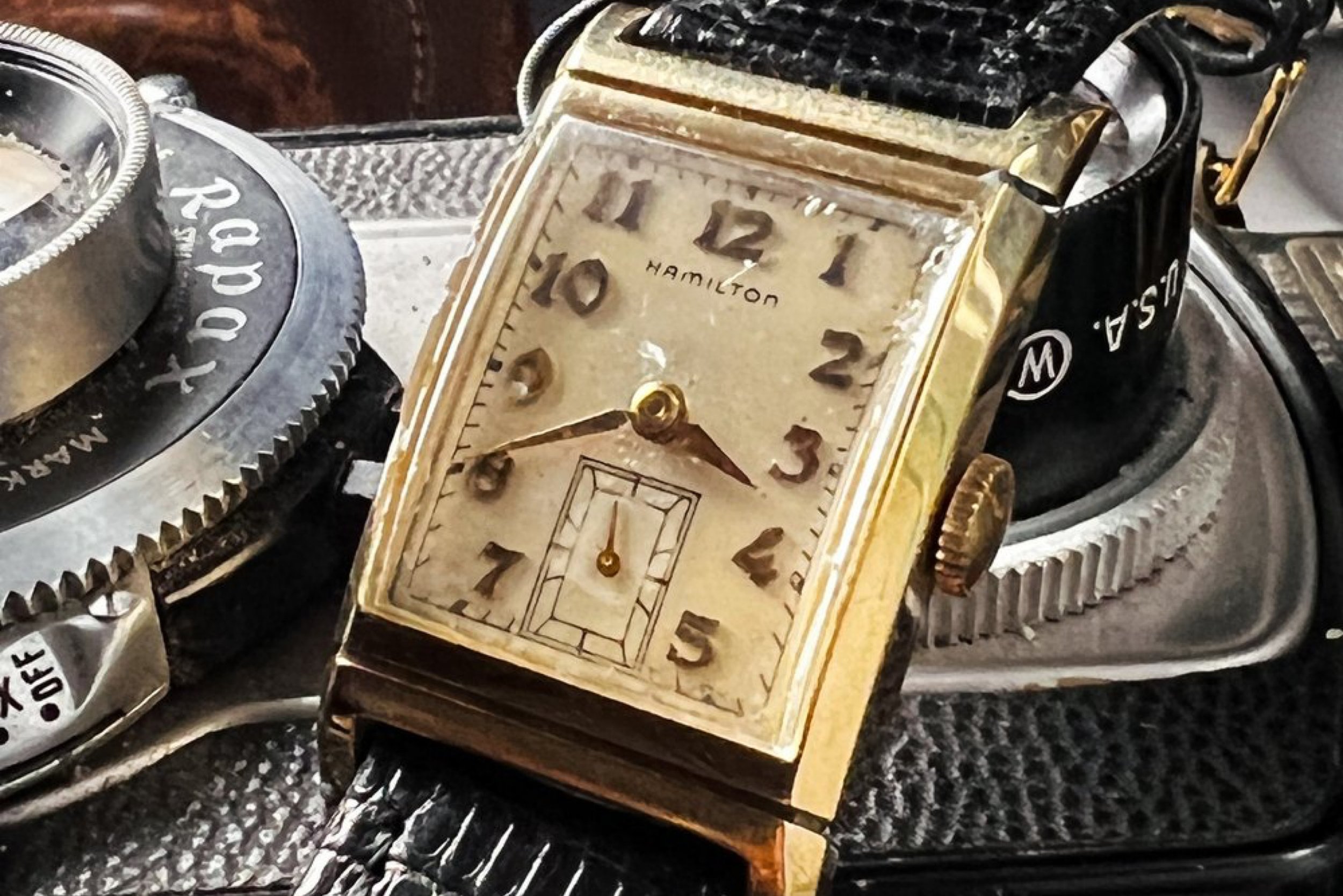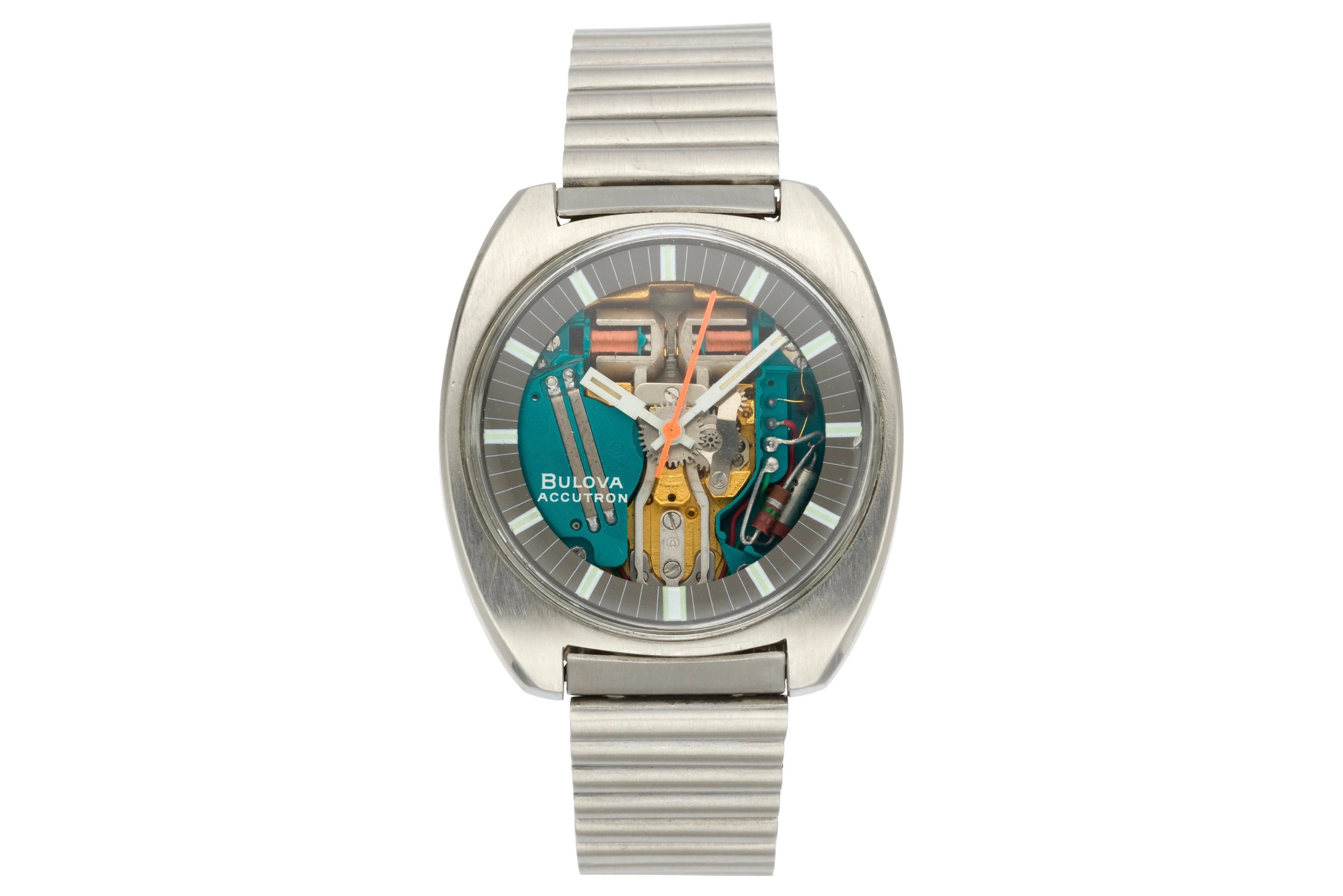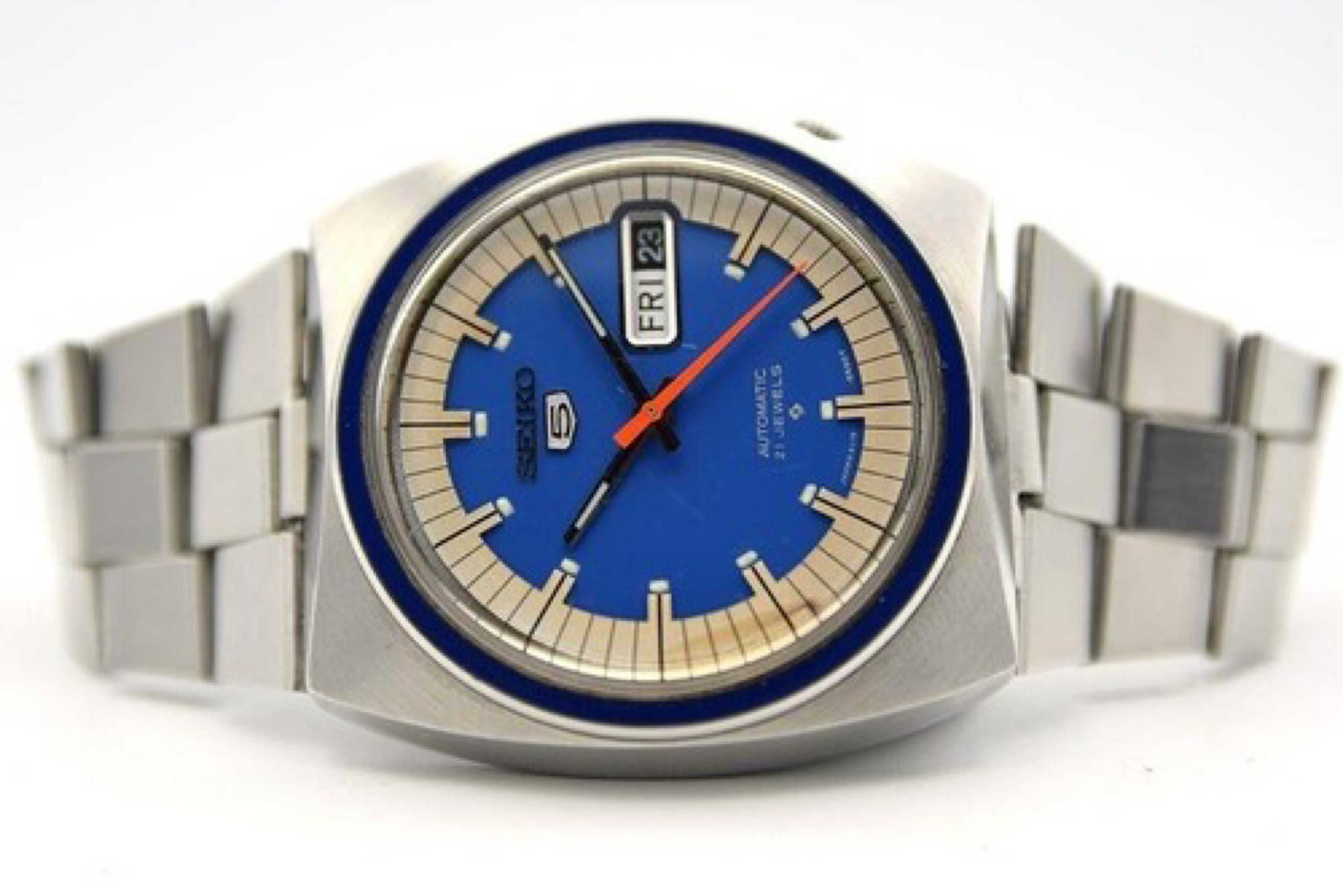30 Best Vintage Watches at all Price-Points
We all love a good comeback story. We’ve recently seen a massive resurgence in vintage watch interest over the last decade. Vintage collectors have always been around, but there’s felt like newfound breath put into the second-hand markets lately. We can chalk some of it up to auctions gaining much more popularity and supply for some of our favorite models dwindling, but I think it’s fair to say that most of us enthusiasts have a vintage watch or two in our collections. Maybe it’s the hunt for a special piece, or just the story of happening upon one in an antique store - Collecting vintage watches is fun in it’s own regard.
Whether it’s a Seiko that’s been handed down or a storied Rolex or Patek Philippe, we at Wrist Enthusiast have a healthy appreciation for all things new and old. Today, we thought we’d highlight some of our favorite vintage watches, and a brief rundown of why we love them. We aren’t vintage watch experts by any means but are excited to highlight some of the ones we find unique and interesting. So without further ado, let’s get into it.
Rolex “Paul Newman” Daytona
Rolex is ovbiously King when it comes to Vintage (Crown included). We could easily fill up a list with just the best vintage Rolex watches, but we’ve kept it short to provide some other options. We’ll start with the “Paul Newman” Daytona. One of, if not the rarest configurations of the Daytona, the Paul Newman seems to be making headlines for some crazy situations. A woman found one in her thrifted couch. Even Paul Newman’s own engraved watch sold at auction for a whopping $17,700,000. At one point, it was the most expensive watch ever sold at auction. Overall, the Daytona is legendary, and earns it’s spot at the top of our list.
Photo courtesy of Amsterdam Vintage Watches.
Rolex Submariner Big Crown (ref. 6538)
A second iconic Rolex is the Submariner Big Crown. The Submariner has gone through a heck of a lot of iterations, and has largely remained fairly standard black on black for most base models. The Submariner Big Crown has become a bit of a rebel of the bunch for a few reasons. One, it was featured in the James Bond movie From Russia with Love, and it features some unique qualities that most other Submariners don’t have. For starters, a red pip at 12 o’clock, and the lack of crown guards for it’s oversized crown (hence the name). The model is difficult to find, but if you do you’ll likely be paying north of $250,000 USD.
Photo courtesy of Monocrhome Watches.
Rolex Explorer II 1655 “Steve McQueen”
When the Rolex Explorer reference 1655 was first released, it was not such a desired timepiece because many found the dial cluttered and difficult to read. It has since become one of the most sought after vintage Rolex models on the market today. The first 1655 was designed for cave divers and explorers to determine when it was daytime or nighttime since many of them were in the dark most of the time. The watch was actually made famous because Steve McQueen himself (labeled the “king of cool”) wore a Rolex Explorer 1655. Since the watch was discontinued and Rolex began producing their original Explorer II, it became an icon and had collectors clamoring for it. The watch originally sold for only a few hundred dollars in the 70’s, and (if you can even get your hands on one), prices for the watch will start at about $28,000 USD.
Photo courtesy of Bob’s Watches.
Rolex Date 1503
On a bit more attainable end, we have the Rolex Date 1503 - The quintessential dress watch back in the 70’s. The all gold date is simply a really clean watch to look at, and considering that even on the secondary market the watch is both attainable, and not terribly expensived gives the watch a leg up in out book of vintage Rolex. The watch comes on a gold bracelet, but we do find that putting it on leather helps the brownish gold mosaic dial shine. Overall, we love it and the Rolex Date 1503 can be found for around $10,000 USD on a bracelet or even cheaper at around $7,000 USD on a leather strap.
Tag Heuer Monaco 1133B
The second watch on the list tied to the King of Cool is the Tag Heuer Monaco. The Monaco was first introduced in the late 1960’s, and was one of (if not the) first racing chronographs to be released in a square case. The watch was well received, and was geearing up (no pun intended) to become an iconic watch in motor sports. But it wasn’t until Steve McQueen famously rocked the Monaco 1133B in the racing film “Le Mans” catipulting the model to the top of many collectors lists of must haves. Naturally, Tag Heuer kept up with the model, updating and collaborating with various companies - Of which we find the Gulf Oil one of the most fun. However, a modern Monaco, as great as it is, doesn’t provide the old world charm as the 1133B when talking about roaring engines in the 70’.s. Amazingly, these watches are still pretty widly available, though you’ll be paying a significant premium on the grey market, with prices typically starting around the $16,000 USD range.
Heuer Autavia GMT Mark 1
One of the more quirky Tag Heuer designs is the Autavia GMT Mark 1. We’ve included in this list to highlight some of the more interesting times of Tag Heuer’s history and we find the 70’s to be when Tag Heuer really sorta let their hair down, and the GMT Mark 1 is staple of that era. The watch comes in a pepsi configuration, meaning half the bezel is red, and half the bezel is blue. While the dial is black to ensure legibility, Tag Heuer opted for white and red accents except for one blocky hand that was an electric yellow with green lume. Overall, the watch is among some of the more colorful and wild designs that came out of Tag Heuer back in the day, and we love it. The GMT Mark 1 is surprisingly easy to find, but the price will typically be right around the $10,000 USD mark.
Photo courtesy of Mayor’s.
Tag Heuer 1000 Series gold
Nicknamed the “Jordan Belfort” by a group of enthusiasts, the gold-plated Tag Heuer features a quartz movement, which while not typical for gold watches, makes sense on something gold-plated. The watch was made famous by “The Wolf of Wall Street” actor Leonardo Decaprio as he plays Jordan in the film. It’s a fitting watch for the notorious Wall Street conman, since it’s flashy, but not terribly expensive, with nothing real special for a movement. Regardless, with the history, and the depth of meaning behind it, we found it to be a fun option for those who’re interested in the either finance, the movie, or the actor. The watch isn’t always the easiest to find, but if you can find it, you can pick it up for around $2,000 USD.
Omega Seamaster ProProf
At the very start of the diving boom, watch brands were racing to develop watches with technologies to accomodate and capitalize on it. One of the most unique dive watches that was created in the late 60’s was the Omega Seamaster 600 “ProProf” for Plongeur Professionnel - Meaning “Professional Diver” in French. As in the name, the watch is rated for 600 meters of water resistance, which is double what many of the major brands had. This is largely due to the unique way Omega cuts the case from a single block of steel and having the dial and crystal loaded in after. This prevents a seal where the deeper the watch goes, the safer it is. Pretty unique. You can still find these watches, but they’ll cost around $10,000 USD.
Photo courtesy of timemerchants.
Omega Flightmaster 145.013
An interesting little fact about Omega is that until the release of the Flightmaster, Omega relied heavily on the Speedmaster to be it’s quintessential flight watch. Because it’s still a solid chronograph, it worked well until the dawn of faster jets and less airtime in the same timezone. Omega recognized this and made the Flightmaster specifically designed for Pilots. In addition to the Chronograph, It features an AM/PM indicator and a second timezone subdial. Additionally, Omega created the watch with standard dive watch specs for the time so the watch is also rated for 200m of water resistance. You can find them pretty easily and they’re usually pretty modestly priced at around $6,000 USD.
Photo courtesy of Hairspring.
Longines 1st Edition Tre Tacche
Longines has a long history in the military watch space, and one of the first entries into their Military collection was the Tre Tacche. The “Tre Tacche” gets its name from the three slits on the back of the case, which was meticulously designed around water resistance and an easy-to-read dial. In that sense, the heat blued hands are a perfect match against the tan dial. The case is on the smaller side at just 30mm, but it does come in a 35mm if you can find it. Prices typically start at $2,500 USD.
Jaeger LeCoultre Memovox
When Jaeger LeCoultre started the development of the Memovex in the late 1940’s, it’s goal was to create an alarm watch that alerted the weared of the time, without the need of a battery to power a speaker. So they developed the Calibre 815. The Memovex ended up being the first watch it was used in, and thus the first mechanical alarm watch was born. The Memovex would later be called the “Wrist Alarm” in the united states as it wasn’t immediately adopted. Many years later, the watch started getting some traction. The brand has since released a number of other installments of the Memovex with a unique module that allows the watch to vibrate instead of chime. A unique feat. The watch is typically not that easy to find, but you can pick one up for around $1,500 USD if you do.
Jaeger LeCoultre Reverso
The second Jaeger LeCoultre on our list is the Reverso. That classic rectangular watch that always tops everyone’s list of beautiful dress watches. The watch wasn’t always associated with a dressy nature, in fact it’s origins are why we find it so cool. It started in 1931 as an idea between friends, one polo player and a wealthy traveler with ties to Jacques-David LeCoultre. The Polo player had broken his watch during his match, and challenged the traveler to make a watch that could stand up to the rugged environment of Polo. He went back, challenged Jacques-David LeCoultre with the task, and the Reverso was born. The end design was a watch that could flip over and slide back into the case and lock. That way it’s protected against impact. There are many MANY iterations of the Reverso, but there is still some charm in the original style reverso with steel caseback. The original is dang near impossible to find in working condition, but the brand released a tribute to the original with modern guts for $11,000 USD.
Certina 410
Certina has created a number of fan favorites over the years. But what the brand has arguably been know for over the course of time is their affordable dress watches. The hand-wind Certina 410 is one of the rare watches from the 1960’s that you can still get for a reasonable price. The watchers are timeless with an art-deco swag. Many brands have created many watches similar to it, but it’s to argue the value of Certina’s stape offering on the secondary. You can usually find the Certina 410 for around $400 USD.
Photo courtesy of Kmitah.
IWC Pilot Cal. 83
When it comes to Pilot watches, IWC is king - And really, they always have been. The IWC Pilot Cal. 83 was launched in the early 1930’s and comes in a dizzying array of configurations. The Caliber 83 movement was built in a similar vein as the brand’s pocket watches, but was modified and slimed down to fit into a wristwatch - Not an easy feat to accomplish. The movement was eventually ecclipsed by the Caliber 89, which was utilized for a much longer time, in many future pilot models, leaving the 83 reserved for a few pieces between the 30’s and 40’s. It makes the find a lot harder, and a lot more rare - However, we fine the Cal 83 pieces a lot more . quintessential to the brand’s history. Luckily, it’s not terribly difficult to find some really clean examples of the Cal. 83 through vintage dealers. For really good quality (Which we’d always recommend when shopping for watches that old) price will typically start around $2800 USD and increase from there.
Hamilton Gilmore
Hamilton is another brand that has a rich history in rectangular movements in mechanical dress watches. We’ve seen the Hamilton Gilmore argued as a “Poor man’s Reverso” and we strongly disagree. For starters, it’s one of the reasonable solid gold watches you can pick up for under $1000. Sure it’s 10k, but it’s a lot of bang for the buck. The brand utilizes applied gold indices, and a small seconds hand with a “Window” subdial. The watch just oozes the 1950’s art deco style, and we love it. You can also typically find these watches in the $650 USD range.
Photo courtesy of Cool Vintage Watches.
Bulova Oceanographer “Devil Diver”
The Bulova Oceanographer has a rich and storied past in the dive watch space. It held it’s own as a smaller brand (at the time) against juggernauts like Seiko and Doxa in the race to the bottom of the ocean. Bulova first released the Oceanographer in the mid-60’s and it quickly got a unique nickname - The Devil Diver. While many brands were rating their water resistance to 200M (or 660 feet), Bulova rated theirs for 203M, or 666 feet - Hence, the Devil Diver. The watch was immediately well received in the dive community, and it launched a long line of “Devil Divers” in other spaces as well, all rated for 666 feet. Bulova has recently re-launched the Devil Diver in a slew of unique and vibrant colorways, so if you’re looking for a more modern take on the watch, those are fairly inexpensive. Though, we hold space for the vintage charm of the original lines of Oceanographers. That like can be found for between $500 USD and $2500 USD.
Bulova Accutron 214 “Space View”
The second Bulova on our list is the Accutron 214. It’s a watch that was mildly popular in the 60’s and 70’s, but has really seen a resurgence in today’s markets - So much so that many are converting the full dial models and faking them as original. The Accutron 214 get’s it’s unique “Space View” nickname from the skeletonized dial displaying Bulova’s patented “Tuning Fork” movement. It’s rare to display a quartz movement, as it’s battery-operated and looks more like a computer than a watch movement. At the time, it was a little taboo. There were a number of iterations made of the Accutron 214 (including a Tiffany & Co stamped crystal, extremely rare), but our favorite is hands down the original “Alpha” case 214. Those can be found as originals, and not conversions for around $2,000 USD. But we just suggest having an expert ensure it before purchasing.
Courtesy of Heritage Auctions.
Universal Geneve Compax
There’s no denying Universal Geneve’s popularity during the 50’s and 60’s, and we’d argue that it owes much of that success to the Universal Geneve Compax. This early sport watch packed a ton of features into it’s hand wound movement. It was one of the most legible Chronograph Calendars on the market, and it was rare to find someone who didn’t have or want a Compax back then. Unfortunately, the brand took a bit a use-abuse-replace go-to market strategy for the Compax, and didn’t give it much water resistance. And after all, it’s a sport watch so it was bound to get wet. With that, it’s rare to find them in good condition these days because over the course of time, moisture is inevitable and wrecks the movements. However, the dials patina nicely over time, so if one is found in good condition, it’ll fetch close to $6,000 USD. Though you can find them in servicable condition for around $2,000 USD.
Photo courtesy of Analog Shift.
Doxa Sub 300
Doxa is another brand with a storied past. They started out making various dress models, but didn’t really hit the spotlight until the late 1960’s with an iconic little orange watch - The Sub 300. As the war ended and more lavish hobbies became more popular, diving emerged a clear winner in the watch space, and brands were clamoring to provide watches that Divers could use as tools. Doxa was a little late to the party, but did things a little different than their competition. First, the dial was an electric orange that was easier to read at depth. Second, the beads of rice bracelet featured a spring loaded extension making it easier to slide over a wet suit. And third, the US Navy No-Decompression Chart was added to the bezel. It truly was one of the first watches built specifically for divers that wasn’t positioned in the luxury space. This quickly put the Sub 300 on the map. There are plenty of examples of the original Doxa Sub 300’s on the market right now, but prices will start right around $1,700 USD.
Photo courtesy of Monochrome Watches.
Oris Star ChronOris 725
In the early 70’s, Oris introduced it’s first chronograph with their Star ChronOris. It featured the brand’s first chronograph movement in the 725. The movement was developed by Dubios-Depraz, and even still, the watch featured some fierce competition and an eventual quartz crisis. The watch itself was modest, with straight lugs hidden by a cusion case - A very popular design in the 70’s. The watch worked very differently than most chronographs at the time, in that counting the minutes on the 725 was a manual process and not done by the movement. In fact, if someone wanted to time something more than 60 seconds, they’d need to rotate the top crown on every 60-second increment to move the internal bezel by increments of one. Apparently at the time, it was too manual, and despite the many colorful iterations, and the impending purchase of Oris by another company, the watch wasn’t produced. Thankfully, the ChronOris is quite a search for collectors in this modern market. If you’re in the market for Oris’ first Chronograph, prices will start right around $1,100 USD.
Zodiac Sea Wolf
Zodiac watches has always had purpose driven design that carries even into it’s catalog today. The Zodiac Sea Wolf was introduced in the 50’s as a purpose built dive watch ready to tackle the elements. It was also incredibly affordable and trusted in the field. In the late 1950’s, we saw the Vietnam War, and the Zodiac Sea Wolf be a trusted watch in the field by many soldiers. They became known as one of the most reliable watches in the military, even if they didn’t have a relationship with them. After the war, Zodiac started designing a new version of the Sea Wolf with more depth and a stronger case. And thus, the ever-popular Super Sea Wolf was born. It was quickly adopted by the US Navy Seals (Another brand you might know had this same adoption) for it’s reliability and legibility. Ironically, the Super Sea Wolf in the industry goes head to head with Rolex in regards to the Navy Seals, but fetch a far less sum than it’s counterpart. You can typically find a Sea Wolf for around $1000 USD.
Patek Philippe Nautilus 3700
Of course, what would our list be without the original Patek Philippe Nautilus (Ref. 3700). 1976 saw the release of 3700, and we’d argue the creation of an entire new segment in the watch industry - Luxury Steel Sport Watches. A steel sport watch was historically never designed to be a luxury item, they were purpose built for something like diving of flying. Most luxury watches of the time came in gold or featured a complication. Then 1972, along came Gerald Genta and asked “Why can’t we make a steel sport watch luxurious?” and designed the Royal Oak - a three hand steel sport watch with a date function and an integrated bracelet, though priced as if it was a solid gold dress watch. Patek Philippe had no choice, the brought on Genta, and he designed the Nautilus - Another three hand steel sport watch with a date function and an integrated bracelet, though exorbitantly priced by 1970’s standards.
The watch was given the name “Nautilus” after the ship from 20,000 Leagues Under the Sea and it completely disrupted Patek’s historically gold dress watch catalog. It quickly became one of the most sought after watches in history, and even today, any version of the Nautilus will fetch hundreds of percentages above it’s retail price. The original 3700 is extremely rare, and will start at $165,000 USD, but will fetch upwards of $365,000 USD in the right circles.
Zenith El Primero
Zenith got it’s start in the mid-1800’s and quickly became known for their precise time-keeping instruments. Though, it wouldn’t be until the close of WWI that they started making wristwatches. The El Primero was introduced as the first mechanical chronograph on the market. Even the name, “El Primero” is “The First” in Spanish. But the El Primero really got it’s start in 1962 with the goal to launch a few years later. However, the technical innovation required would literally have Zenith inventing ways to integrate the chronograph instead of just adding a chronograph model on top of a movement. Additionally, higher ambitions were set in that Zenith wanted to be able to measure 1/10th of a second in their chronograph - A massive feat. Finally, by 1969 the El Primero was introduced. There is much debate as to who was actually “The First” as Seiko and Chronomatic Group had released an automatic chronograph the same year. What can’t be debated, is Zenith movement was a far superior high-beat movement with massive technical innovations. It’s part of what gives the Zenith El Primero such a rich history. Obviously, the El Primero is being produced to this day with modern modifications. But if you’re in the market for a vintage El Primero, prices will start around $9,000 USD and gradually increase based on condition.
Breitling Top Time
The Breitling Top Time has a uniquely targeting history with Breitling as a brand. On the heals of the Navitimer, which was worn extensively by famous people that the Baby Boomer generation admired, wasn’t being purchased by the Baby Boomer generation. So Breitling put their heads together and designed a watch to appeal to the younger 1960’s crowd. In fact, one of the more famous quotes from Willy Breitling (Head of Breitling at the time) was:
“Young people won’t buy the kind of watch dad wears.”
And so in 1964, he created the Breitling Top Time. The Top Time was a unique performance-themed chronograph watch with clean edges and a high polish. It was affordable, but looked way more expensive than it was, and that was appealing to the Baby Boomer generation. Further, when the watch made an appearance on the wrist of James Bond in Thunderball, it took off into a hugely successful model for Breitling. The watch evolved, and many different dial configurations were made. The brand has recently relaunched the collection with more modern guts, but the vintage top times can still be found on secondary markets at various pricing depending on the model, but the prices will start at around $1,800 USD.
Seiko 6119-8490
When it comes to affordable vintage, Seiko is King. The Seiko 6119-8490 line of watches was a standout for the brand with colorful dials, a beast of a movement, and the ability to easily swap straps and bracelets made it a fan favorite in the late 70’s. However, we’ve seen a bit of a re-emerging of the models due to their relative affordability, and high collectability. The dials come in bold colors including an electric blue that seems to be the fan favorite. Add with it the fact that it features an integrated bracelet (or leather, We love them on leather) and you’ve got yourself a clear affordable winner. You can typically find the Seiko 6119-8490 for around $150 USD, but prices will increase with rarer configurations.
Photo courtesy of Lot-Art.
Audemars Piguet Royal Oak 5402ST
Released in 1972, the Royal Oak Ref. 5402ST marked a turning point for Royal Oak. First, the story goes that legendary watch designer Gerald Genta, designed the watch in one night. Additionally, the Royal Oak was Audemars Piguet’s first steel watch. The brand had so little experience working in steel, the prototype was built in a much softer metal, white gold.
Only 1,000 of the original 5402ST were released, but the release of the Royal Oak was certainly a momentous event in watch history. The Royal Oak is AP’s most recognizable model, being offered in dozens of sizes, configurations and materials. Our favorite is the classic. The Royal Oak Ref. 5402ST retails on the secondary market for between $1,000 USD and $2,000 USD. If like the Royal Oak but want a modern interpretation loyal to the original, the Ref. 16202ST retails for $33,200 USD.
Panerai Luminor 6152/1
One of the holy grails among vintage watch collectors are the vintage Panerais, and the Ref. 6152/1 in particular. These pieces were produced in the 1940s, and surprisingly featured either Rolex or Angelus movements. If you are not aware, in 1935 the Royal Italian Navy, or Marina Militare, commissioned Panerai to build watches that could withstand harsh elements. The first prototype, the Radiomir, was presented to the Italian Navy a year later, in 1936. The Royal Navy then commissioned the 6152/1 with more solid lugs (the Radiomir had wire lugs) and a look that has been carried into the modern Panerais. Because these watches were produced for the Italian Navy, they are extremely rare and sought after. Depending on the configuration, a Panerai Luminor 6152/1 can sell on the secondary market from $100,000 USD to over $200,000 USD.
Tudor Montecarlo 7031 Homeplate
Rolex not only dominates the modern watch market, but also the vintage watch market. But for someone looking for something a little different, Rolex’s sister brand, Tudor, has some great options that are highly collectible. One such piece is the Tudor Montecarlo 7031 Homeplate chronograph. Nicknamed the “Homeplate” because the hour markers all look like the homeplate of a baseball diamond, the Tudor 7031 has many similarities to the vintage Daytonas. From the plastic tachymeter bezel to the screw down chronograph pushers and metal bracelet, the Home Plate has a lot of Daytona vibes. The dial, however, is very different. The grey dial with black subdials and orange accents make the watch a little more bold, and we like it very much. With rising prices of vintage Daytonas, the Tudor Montecarlo too has seen an increase in demand and price. However, the watch is a lot more affordable than Newman Daytonas. You can pick up a Tudor Montecarlo 7031 Home Plate for between $28,000 USD and $45,000 USD.
Photo courtesy of HQMilton.
Tudor Submariner “Snowflake”
The Submariner might be most closely associated with Rolex (and we even included a Rolex Submariner on this list), but Tudor also produced a Submariner from 1954 to 1968. The Tudor Submariner bears striking similarities to the Rolex Submariner, except for some uniquely Tudor details, including the square hour markers and diamond shaped hour hand. The nickname “Snowflake” was given to the watch because of the diamond second hand that resembles (kinda) a snowflake. The Snowflake is a steel watch, but they normally feature a blue dial and bezel, something that Rolex only offers on a white gold Submariner. Blue dial Tudor Snowflakes are definitely in-demand among collectors, but will range in price from $10,000 USD to $40,000 USD.
Photo courtesy of Analog Shift.
Blancpain Fifty Fathoms No Radiation
Blancpain has claim to fame with the first real dive watch, the Fifty Fathoms. And one vintage Fifty Fathoms model was absolutely love is the Fifty Fathoms No Radiation. The first thing you’ll notice is the watch has a large Xed out red and yellow radiation sign above the six o’clock hour marker. Why, you ask? That’s because when the Fifty Fathoms was first introduced, all the watches used radium paint for illuminating the dial in the dark (modern day SuperLuminova did not exist at the time). It turns out, radium is in fact radioactive. During the Cold War, and with added attention to the potential for Nuclear War, the public became more concerned with radioactive materials. So Blancpain decided to switch to Tritium to illuminate their watches and wanted to make sure the public knew their watches were completely safe. That’s why they put the big No Radiation decal on the dial.
We think this watch is not only a great piece of watch history, but a great piece of world history. Because of this, the Blancpain Fifty Fathoms No Radiation is hot among watch collectors. You can pick one up on the secondary market for between $30,000 USD and $50,000 USD.
Photo courtesy of Haute Time.

